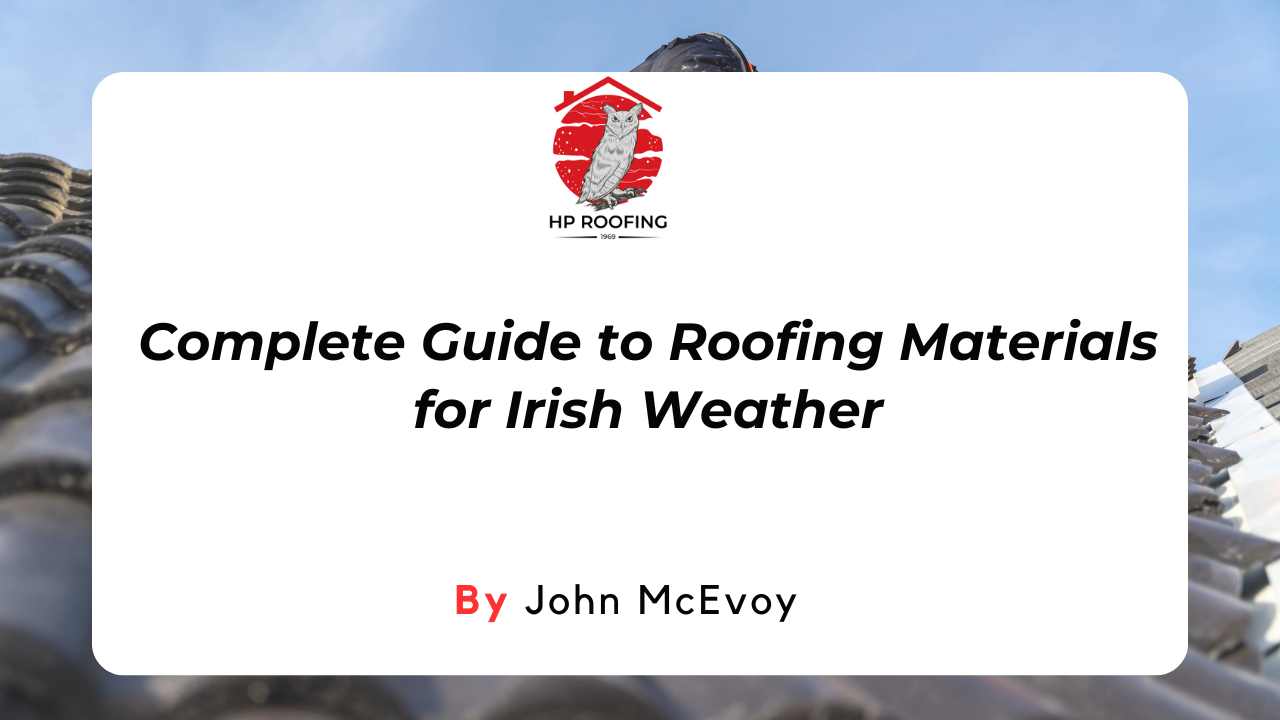Are you asking yourself how many roof vents do i need? Roof ventilation is becoming a key focus for homeowners who want to protect their property and reduce long-term maintenance costs.
Roof vents provide the advantage of keeping your attic space dry, preventing mould growth, and protecting the structure of your roof. This can be particularly beneficial in Ireland’s damp climate, where trapped moisture can quickly cause expensive damage.
However, understanding the right number of vents is crucial to ensuring proper airflow and energy efficiency. In this blog, we’ll explain how to calculate vent requirements, explore options, and share expert advice.
Why Is Roof Ventilation Important?
Proper roof ventilation helps regulate temperature, prevents moisture build-up, and extends the life of your roofing materials. Insufficient ventilation can lead to issues such as:
Condensation
Leading to mould growth and wood rot, condensation weakens roof structures and damages insulation over time.
Overheating
Especially in summer, poor ventilation traps heat in the attic, which can damage roofing materials and make living spaces uncomfortable.
Energy Inefficiency
Poor ventilation forces your HVAC systems to work harder, driving up energy bills and reducing overall efficiency.
How Many Roof Vents Do I Need?
The number of roof vents you need depends on your attic size, roof design, and building regulations. A balanced system of intake and exhaust vents is essential to keep air flowing effectively. Too few vents cause moisture and heat build-up, while too many placed incorrectly may lead to energy loss.

Calculating the right amount ensures long-term protection, efficiency, and comfort for your home. Consulting a roofing expert helps avoid mistakes and guarantees compliance with Irish standards.
What Factors Affect Roof Ventilation Needs?
Understanding these factors ensures the system is designed correctly, keeping your roof healthy and efficient. Here are the key considerations:
Roof Size and Layout
Larger attics and complex roof layouts demand more ventilation. Extra dormers, valleys, or multiple roof sections may require additional vents to ensure even airflow throughout the entire space.
Roof Pitch
The slope of the roof impacts how air circulates. Steeper pitches generally promote natural airflow, while low-pitched or flat roofs may need more vents or specialised solutions to maintain proper ventilation.
Type of Ventilation System
Irish homes typically use a mix of soffit or eaves vents, ridge vents, and tile or slate ventilators. In some cases, gable vents and roof-mounted static vents are added for balance. The type chosen affects both how many vents are necessary and how they should be distributed across the roof.
Net Free Area
Ventilation needs are measured by “net free area” (NFA), which represents the actual open space allowing air to pass through. Knowing the NFA of each vent helps calculate the correct number required for effective airflow.
How to Calculate the Number of Roof Vents For Your Home?
Calculating the right number of roof vents ensures balanced airflow and protects your home from moisture and heat damage. By following a few simple steps, you can work out how many vents are needed for safe and efficient ventilation.

Determine the Total Airflow Required
Start by measuring your attic floor area. Building guidelines often recommend a ratio of ventilation area to roof space, for example one square foot of net free area (NFA) per 300 square feet of attic space. This gives you a clear target for how much airflow is needed. A larger attic will naturally require more airflow, while smaller roof spaces may only need a limited number of vents. Getting this first calculation right is essential before moving to the next step.
Divide NFA Equally
For balanced performance, divide the required NFA equally between intake and exhaust vents. Half should be placed at low levels such as soffit or eaves vents, and the other half at high levels like ridge vents or roof ventilators. This balance helps create a natural flow of air, with cooler air entering low and warmer air exiting high. If the airflow is not balanced, moisture and heat can build up in one part of the attic.
Check the NFA of Your Chosen Vent Type
Different vents provide different amounts of airflow. Always check the NFA rating given by the manufacturer for your chosen vent type, whether soffit, ridge, tile, or slate vents. This figure tells you exactly how much ventilation each vent provides and prevents underestimating or overestimating what is needed. By comparing the total required NFA with the NFA of each vent, you can work out the exact number needed for your home.
Calculate Vent Spacing
Finally, distribute the vents evenly across the roof to avoid dead spots where air circulation may be poor. Proper spacing improves efficiency and ensures that every part of the attic benefits from consistent airflow. Grouping vents too close together can create uneven ventilation, while large gaps between vents may leave parts of the attic unprotected. Spacing vents correctly is just as important as calculating the right number.
What Are the Common Mistakes to Avoid?
Many homeowners underestimate the importance of proper roof ventilation, which often leads to costly problems later. By knowing the most common mistakes, you can take steps to avoid them and ensure your roof performs as it should.
Ignoring Building Codes
Overlooking Irish building regulations can cause serious issues. These codes set minimum requirements for ventilation, and failing to follow them may result in poor airflow, structural damage, or even warranty disputes. Always check guidelines such as Technical Guidance Document F before planning any ventilation system.
Unbalanced Ventilation

Installing only intake vents or only exhaust vents leads to stagnant airflow. When fresh air cannot flow evenly through the attic, condensation and heat build-up occur. Balanced ventilation, with intake at the eaves and exhaust at the ridge or roofline, ensures continuous air circulation.
Incorrect Vent Placement
Even the right number of vents will not work effectively if they are placed poorly. Vents that are grouped too closely or blocked by insulation will not allow air to move freely. Distributing vents evenly across the roof helps maintain consistent airflow in every section of the attic.
Using the Wrong Vent Type
Not all vents are suitable for every roof type. For example, ridge vents work well on long pitched roofs, but dormers or flat roofs may require tile vents or roof-mounted ventilators. Choosing the wrong vent type can reduce performance and leave areas under-ventilated.
Conclusion
Understanding how many roof vents do i need is essential for protecting your home from condensation, overheating, and energy inefficiency. We’ve covered why ventilation matters, the key factors that influence requirements, how to calculate vent numbers, and the common mistakes to avoid. With the right balance of intake and exhaust vents, your roof will last longer, your energy bills will stay lower, and your home will remain healthier.
If you are unsure about your roof ventilation, let HP Roofing help. Our team specialises in assessing, installing, and maintaining effective roof ventilation systems. Contact HP Roofing today to schedule your consultation and ensure your roof gets the care it deserves.
















